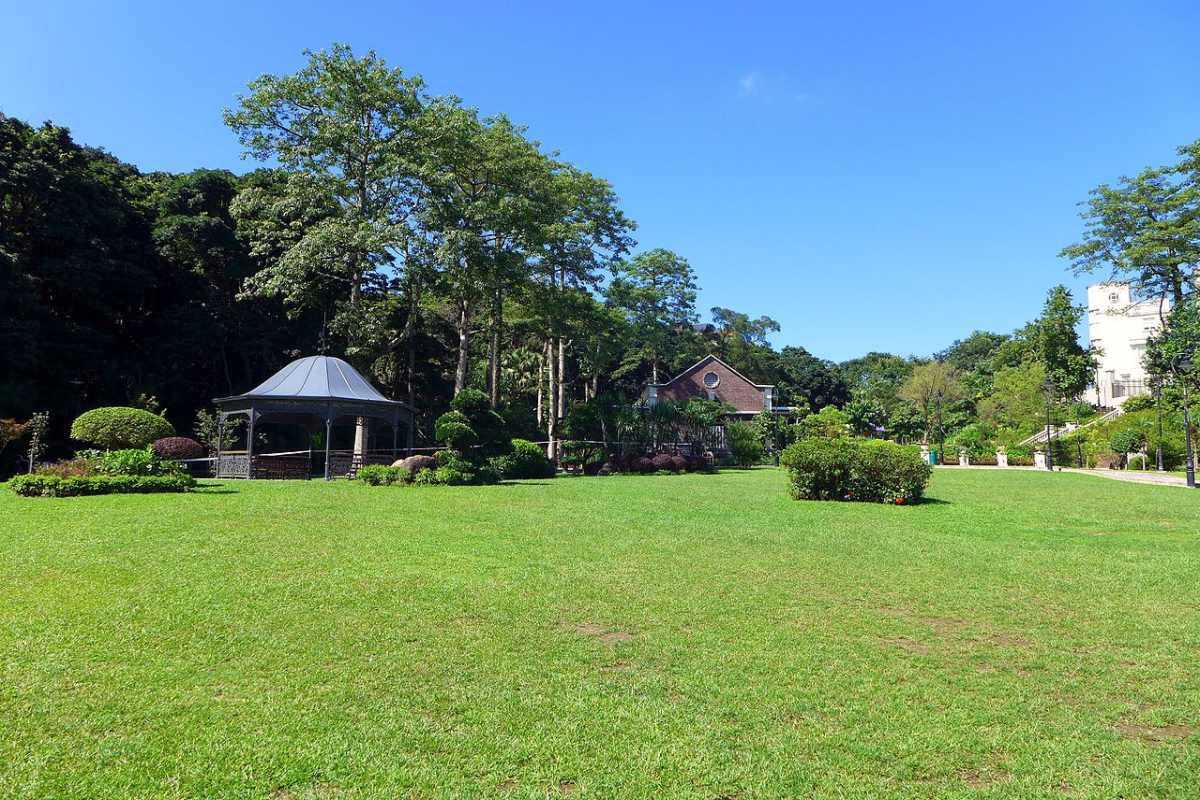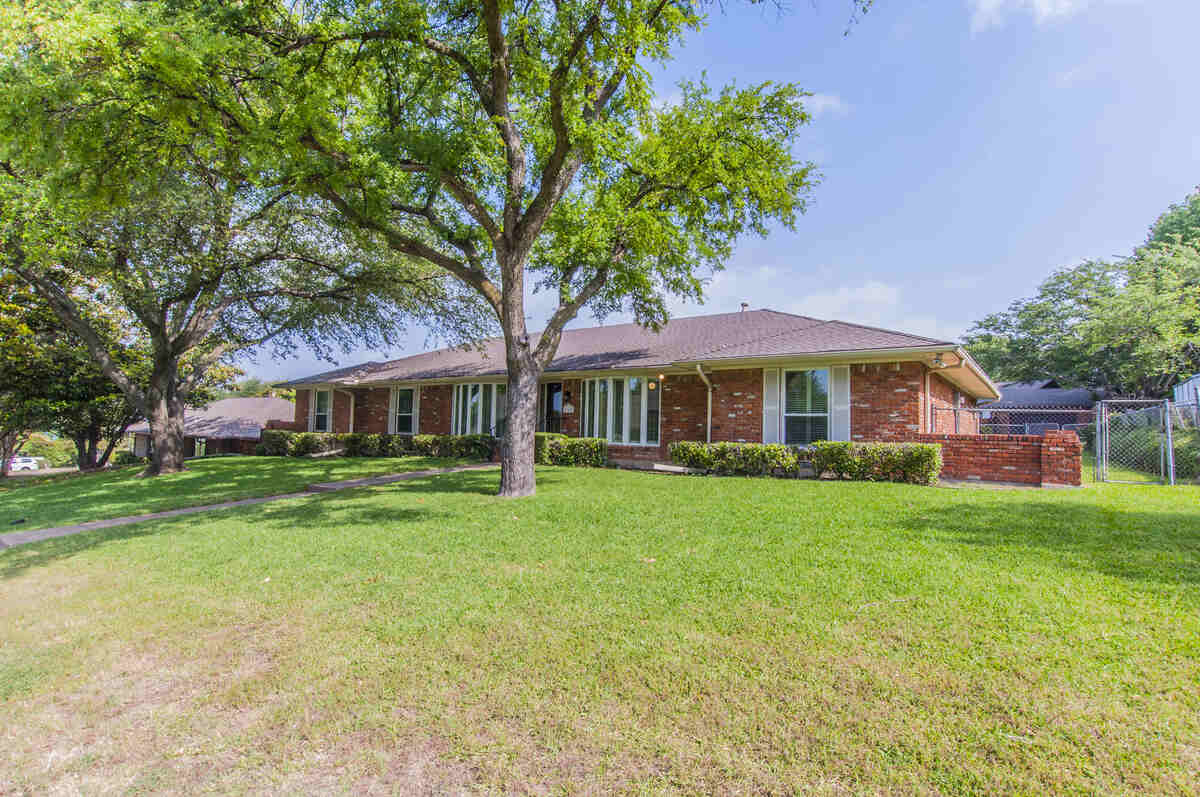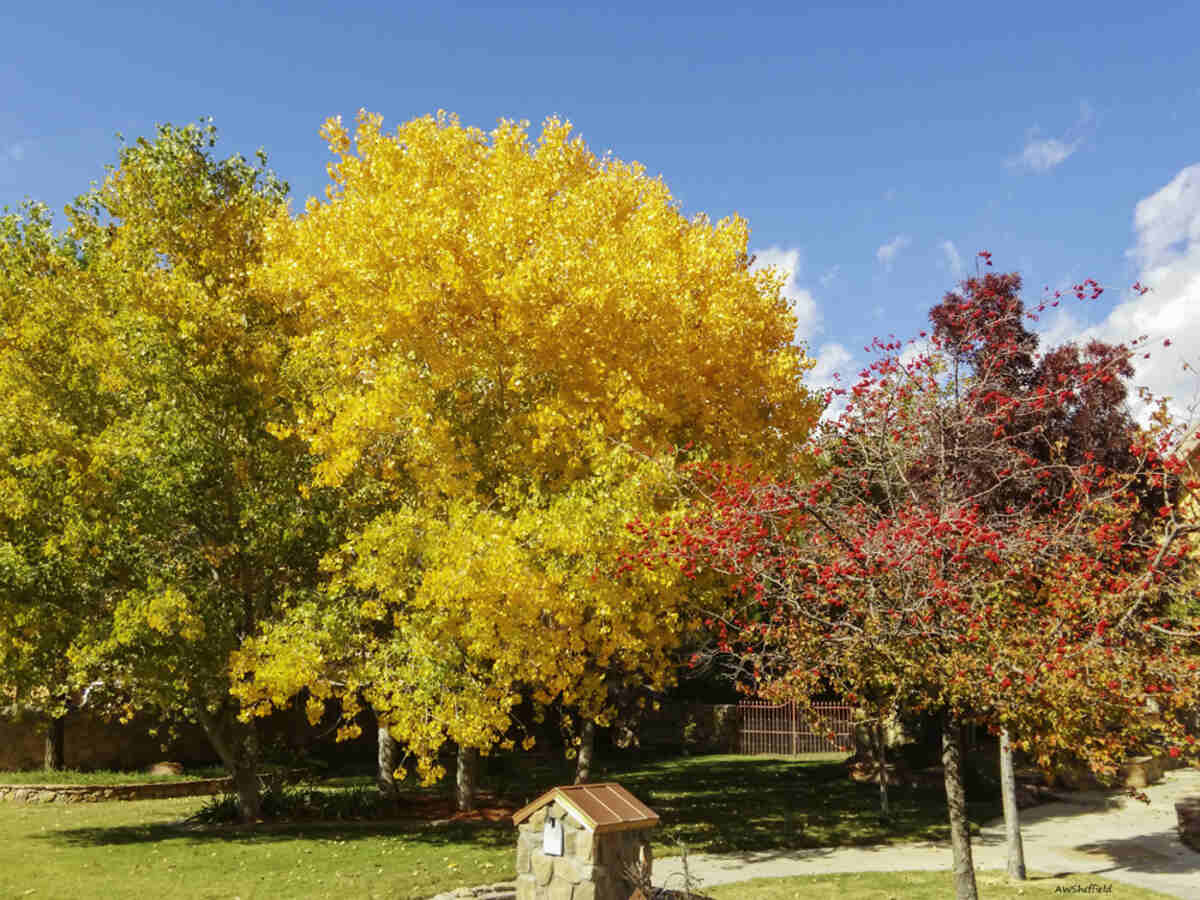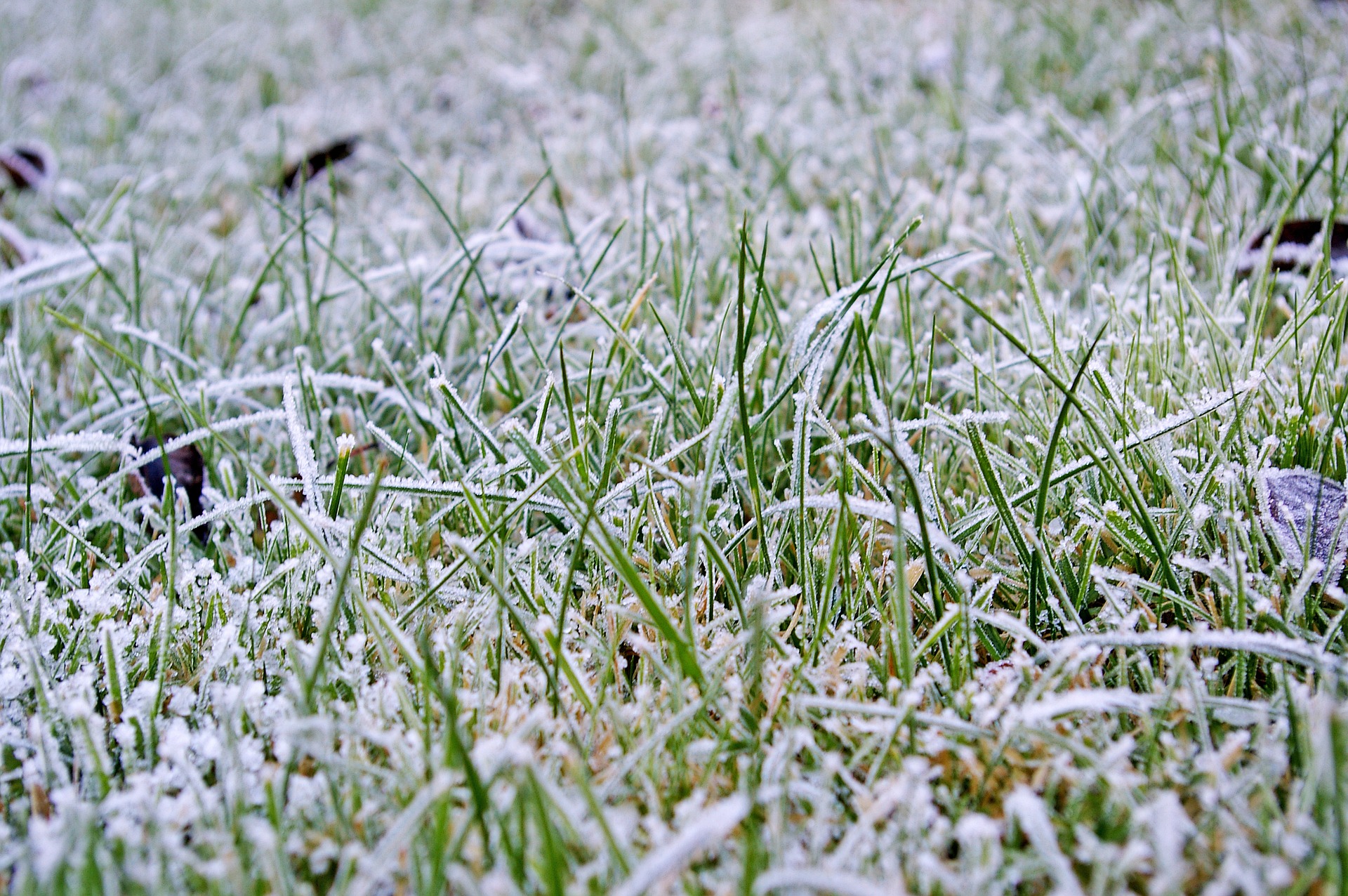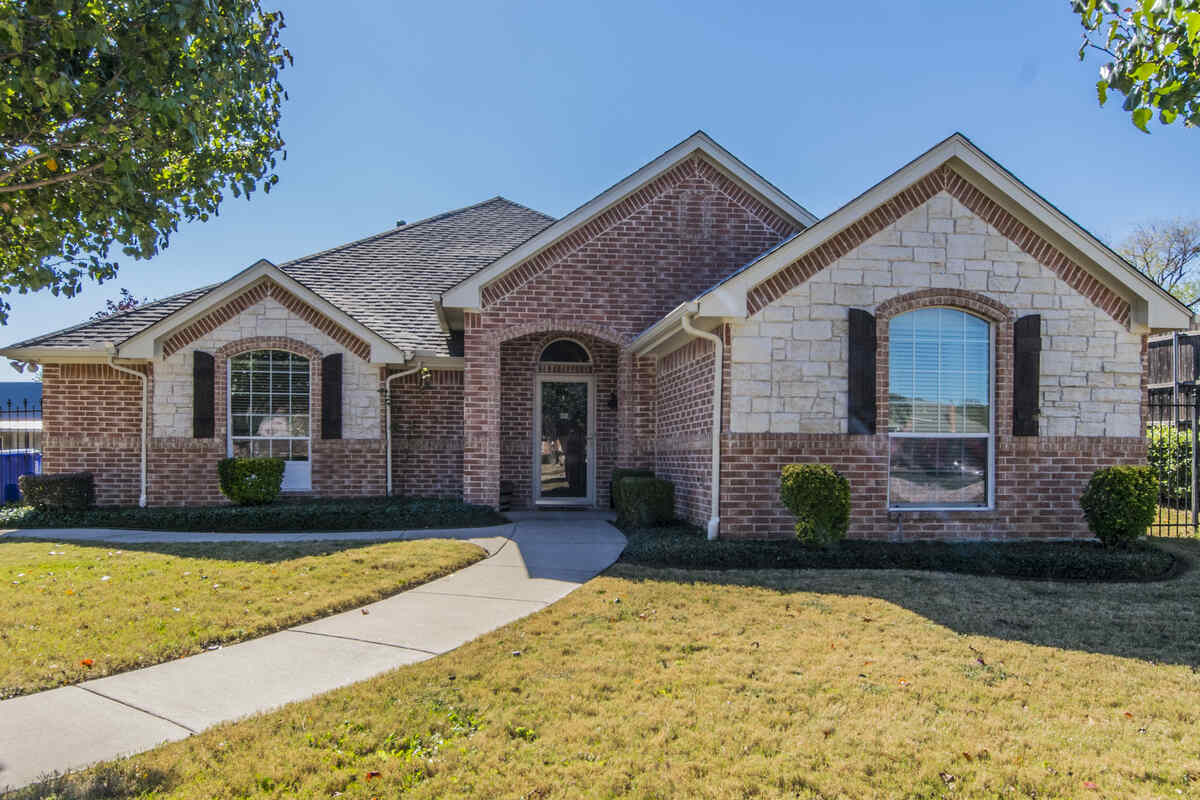
Located on the eastern shore of Lake Ray Hubbard, Rockwall’s climate is typically hot and humid during the summers, while winters are generally mild to cool. Which warm-season grass types can take the heat? These are the four best grass types for Rockwall, TX:
If you’re looking for a short guide on how to choose the best grass type for your Rockwall lawn, we’ve included an overview at the end.
Bermudagrass
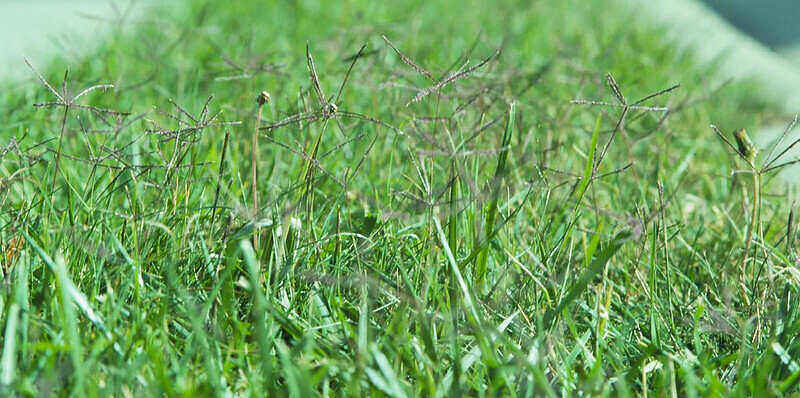
Photo Credit: Matt Levin / Flickr / CC BY-SA 2.0
Bermudagrass is a popular warm-season grass known for its rapid growth rate. Although its aggressive growth can make it difficult to contain, Bermudagrass is highly resilient and recovers quickly from damage. This quick recovery and resistance to wear make Bermudagrass popular on athletic fields, golf course teeing areas, and home lawns with active families and pet traffic.
Although Bermuda is known for its drought resistance, it may go dormant during prolonged periods without water. Providing 1-1 1/2 inches of water per week through rainfall or irrigation during summer is recommended to prevent dormancy.
- Classification: Warm-season grass
- Spreads by: Stolons and rhizomes
- Shade tolerance: Low; thrives in full sun
- Drought tolerance: High
- Foot traffic tolerance: High
- Maintenance needs: Needs frequent mowing due to fast growth rate; develops thatch easily; needs regular fertilization
- Mowing height: Set the mowing height between 0.5 and 1.5 inches for hybrid Bermudagrass cultivars. Mow common Bermudagrass down to 1.5 to 2.5 inches.
- Potential for disease: Good disease resistance, although diseases are common; low resistance to insects
- Soil pH: 6-6.5
- Soil type: Tolerates most soil types
Other notes: Bermudagrass loves to creep into flower beds and is challenging to contain because of its invasive qualities. It’s tough and can withstand heavy foot traffic, so invite the neighbors over for a Friday night bash in your backyard!
Grass Seed Options:
– Pennington Bermudagrass Bare Spot (5 lb. bag)
– Pennington Smart Seed Bermudagrass Mix (8.75-lb. bag)
– Scotts Turf Builder Bermudagrass (10-lb. bag)
– Hancock Seed Co. Bermudagrass (50-lb. bag)
St. Augustinegrass
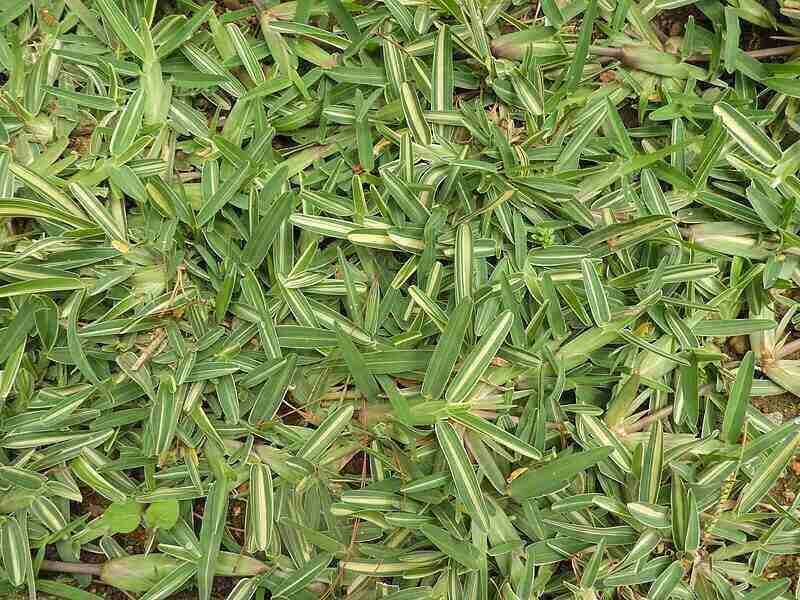
Photo Credit: Yercaud-elango / Wikimedia Commons / CC BY-SA 4.0
St. Augustinegrass has broad, coarse leaves and large, flat stems that give it a similar appearance to centipedegrass. This grass spreads through above-ground stolons, or runners, which help it form a moderately dense turf.
Its attractive blue-green color and moderate shade tolerance (St. Augustine is the most shade tolerant of all the warm-season grasses) make it a suitable option for homeowners with shaded lawns due to large-canopied trees.
Although St. Augustinegrass has developed moderate shade tolerance, it does have less drought tolerance than Zoysiagrass or Bermudagrass. It will not tolerate waterlogged soils or extended periods of cold weather.
- Classification: Warm-season grass
- Spreads by: Stolons
- Shade tolerance: Moderate. It is the most shade-tolerant warm-season grass.
- Drought tolerance: Moderate to High
- Foot traffic tolerance: Low
- Maintenance needs: Needs frequent mowing due to fast growth rate; develops thatch easily; needs regular fertilization
- Mowing height: Set the mowing height between 3.5 and 4 inches.
- Potential for disease: Moderate to high
- Soil pH: 6-7.5
- Soil type: Tolerates many soil types; prefers moderately fertile and moist (not waterlogged) soils; doesn’t tolerate soil compaction
Other notes: St. Augustinegrass grass seed is not available for sale. The only way to establish your lawn with this grass is by sod, plugs, or sprigs. Also, don’t use this grass for low-lying areas that hold water – it hates wet feet!
Grass Plug Options:
– Seed Ranch St Augustine Seville Grass Plugs (2 Trays)
– Seed Ranch St Augustine Floratam Grass Plugs (2 Trays)
Zoysiagrass
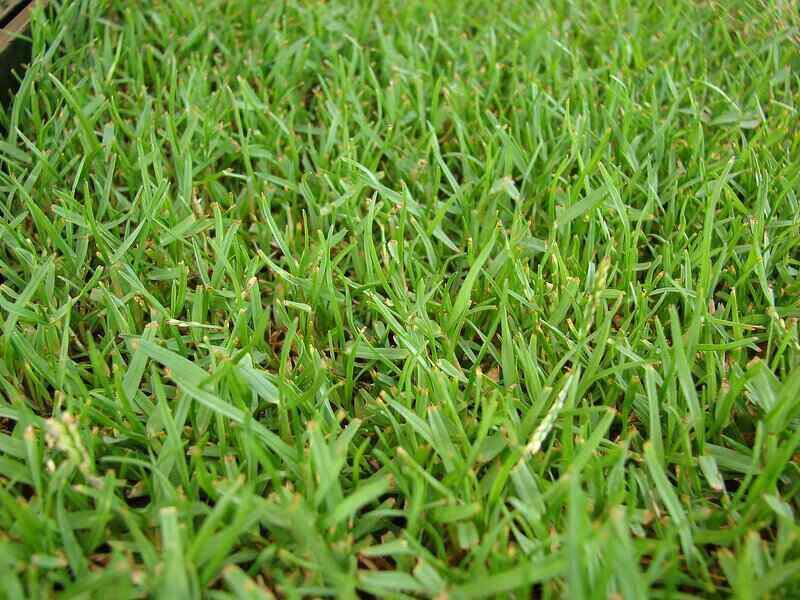
Photo Credit: Forest & Kim Starr / Wikimedia Commons / CC BY 3.0 US
If you’re looking for a turfgrass that’s perfect for walking barefoot, zoysiagrass is a great choice. This warm-season grass is known for its drought tolerance, although it may turn brown earlier than Bermudagrass. While zoysiagrass can handle some shade, it’s less shade tolerant than St. Augustinegrass.
While Zoysiagrass may take some time to establish, it produces a dense and lush lawn resistant to weeds once it does. Because it takes so long to establish by seed, Zoysiagrass is typically planted using sod or plugs and is considered a premium choice for those looking for a high-quality lawn.
- Classification: Warm-season grass
- Spreads by: Stolons and rhizomes
- Shade tolerance: Moderate
- Drought tolerance: Moderate
- Foot traffic tolerance: High, but recovers slowly from damage
- Maintenance needs: Low nitrogen fertilization requirements. However, it’s prone to thatch build-up.
- Mowing height: Set mowing height between 1 and 2 inches.
- Potential for disease: Good disease tolerance overall
- Soil pH: 6-6.5
- Soil type: Well-draining; some cultivars are more tolerant of a wide range of soils than others
Other notes: White grubs and nematodes love to hang out and cause significant damage.
Grass Plug and Seed Options:
– Zoysia Plugs (50 Large Grass Plugs)
– Zoysia Plugs (50 Full & Lush Grass Plugs)
– Zoysia Plugs (100 Plugs)
– Zoysia Emerald Grass Seeds (1/8 lb. of seeds)
– Zenith Zenith Grass Seeds (1/8 lb. of seeds)
Buffalograss
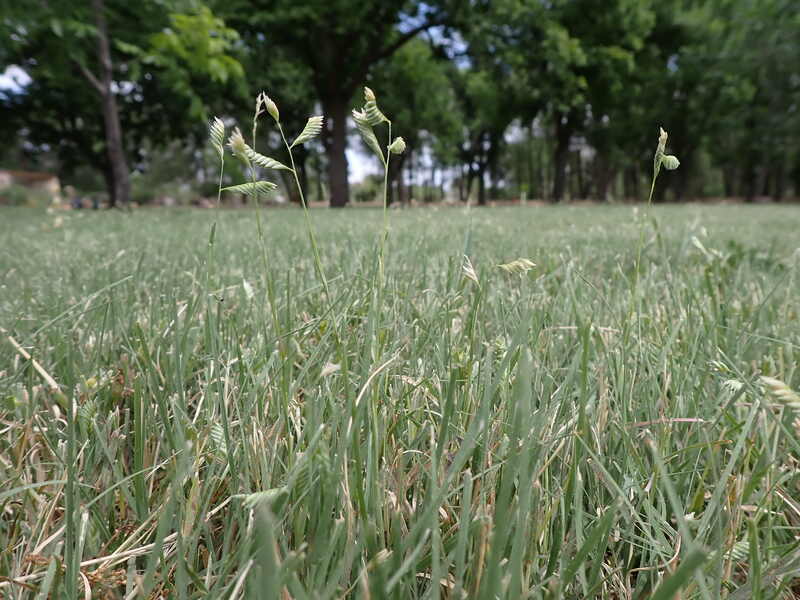
Photo Credit: Matt Lavin / Flickr / CC BY-SA 2.0
This native turf grass from Texas is a great option for those who want a low-maintenance lawn requiring minimal fertilization. Buffalograss was once a primary source of grazing for the vast herds of buffalo that roamed North America. This hardy grass is naturally resistant to drought and disease, making it a popular choice for those who don’t want the hassle of constant upkeep.
Pro Tip: Check with your HOA before planting buffalograss. Even under the best management, buffalograss doesn’t produce the kind of “showpiece” lawn that you can get from a highly managed Bermuda, St. Augustine, or Zoysia lawn.
- Classification: Warm-season grass
- Spreads by: Stolons
- Shade tolerance: Low
- Drought tolerance: High
- Foot traffic tolerance: Low
- Maintenance needs: Low fertilizer and mowing needs.
- Mowing height: Set the mowing height between 2 and 3 inches.
- Potential for disease: Good tolerance against diseases and insects
- Soil pH: 6.5-7.5
- Soil type: Native clay soils, not sandy soils
Other notes: Buffalograss is a North American native grass and is often used as turfgrass because it requires minimal upkeep, though weeds can be an issue. In fact, it gets its name from the American bison, which graze on it as a natural part of their diet.
Grass Seed Options:
– Everwilde Farms Buffalograss Seeds (1 lb. of seeds)
– Scotts Pursue Buffalograss with Natural Seed (1 lb. of seeds)
– Outsidepride Perennial Buffalo Grass Seed (2 lb. of seeds)
How to Choose the Best Grass Type for Your Rockwall Lawn
Is your lawn in full sun most of the day? Are there large trees that create dense shade? Do you have low-lying areas that like to hold water or areas that dry out quickly? Consider these tips to help you decide on the grass that best fits your Rockwall lawn.
Drought Tolerance
To maintain a healthy lawn during drought conditions, choosing a turfgrass variety resistant to drought is crucial. It’s important to remember that some varieties may require more watering than others during these dry periods.
High drought tolerance: Bermudagrass, buffalograss
Moderate drought tolerance: Zoysiagrass, St. Augustinegrass
Shade Tolerance
When it comes to keeping your lawn healthy, the amount of shade it receives is a key factor to consider. Different grass types have varying shade tolerance levels, so it’s vital to assess whether your lawn is in full sun or if there are large tree canopies creating shade.
Watch how the sun moves over your lawn during different hours. Based on those observations, you can choose the right type of grass for your lawn’s level of sun or shade.
Low shade tolerance: Bermudagrass, buffalograss
Moderate shade tolerance: Zoysiagrass, St. Augustinegrass
Low Maintenance vs. High Maintenance
When it comes to maintaining your lawn, it’s important to consider your available time and budget. Low-maintenance grasses can thrive with less attention and care, making them a great option for those with limited resources or a busy schedule.
On the other hand, high-maintenance grasses demand regular mowing, fertilizing, and watering, which can be time-consuming and costly.
Low-maintenance grasses: Zoysiagrass, buffalograss
Moderate to high-maintenance grasses: St. Augustinegrass, Bermudagrass
When to Consult a Lawn Care Pro
It’s important to choose the right type of grass to fit your lawn’s level of traffic, shade, desired level of maintenance, and soil type. By assessing your lawn’s unique needs, a LawnStarter lawn care pro can recommend the best grass type for your Rockwall lawn and keep it trimmed and neat all year long.
LawnStarter participates in the Amazon Services LLC Associates Program, an affiliate advertising program. LawnStarter earns revenue from products promoted in this article.
Main Image Credit: Brent Eckley / Flickr / CC BY 2.0
